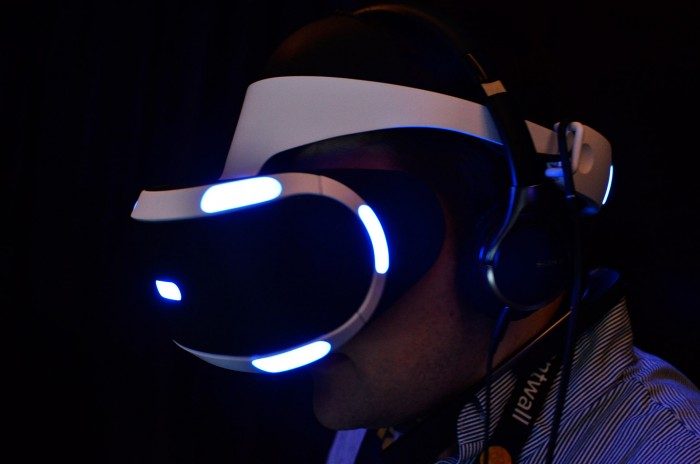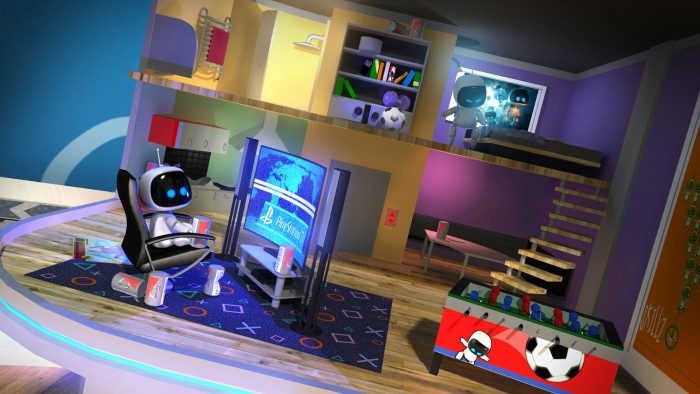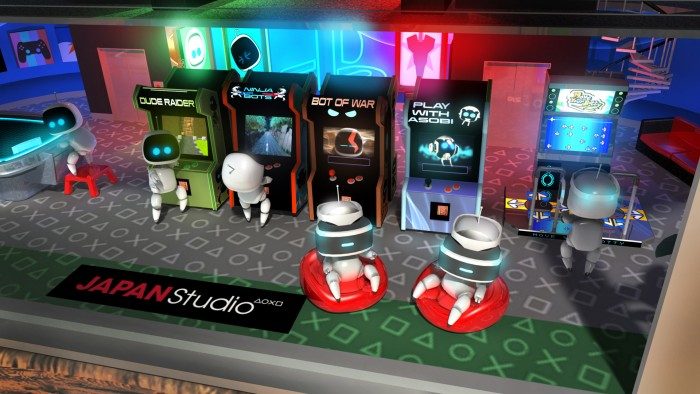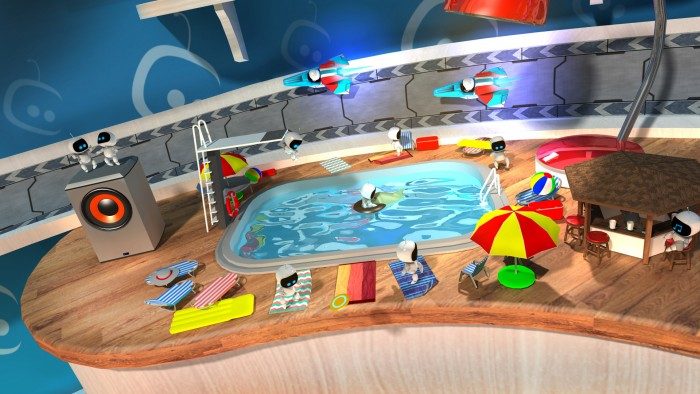Bedroom Robots
After Magic Controller I tried Bedroom Robots, another demo from the same studio, but this one was running natively at 60Hz with Asynchronous Reprojection used to output 120Hz. I didn’t spend enough time to get a sense of whether or not the native 120Hz of Magic Controller made a substantial difference compared to the Asynchronously Reprojected 120Hz of Bedroom Robots, but I did note that I didn’t get the same powerful moment of Presence as I had felt in the former, even though Bedroom Robots was plenty immersive.
Bedroom Robots demo put me into a circular toy-room of sorts. In front of me was essentially a large dollhouse with several rooms, all populated with tiny Bots. The detail in this scene was really something to behold. There were little vignettes happening everywhere I looked. Peering at some of the Bots would cause things to happen, like a little guy running on a treadmill—who must’ve been spooked when I leaned my massive head in to take a look—and went tumbling off and flew into the elevator behind him!
There were Bots tossing a frisbee from one side of the dollhouse to another, swimming Bots, one Bot watching TV with a few discarded cans of ‘Bot Lite’, Bots playing in an arcade (one playing a DDR clone called Move Your Botty), some Bots racing in Wipeout ships along a track that encircled the entire room, and even a few Bots sitting in chairs with little Morpheus headsets on.
I’ve been in a number of ‘VR dioramas’ before, and there’s not one so far that I haven’t liked. I have a feeling that gamified VR dioramas will become a genre all their own.
See Also: Anyone Who Says ‘You Can’t Do VR on Console’ Hasn’t Tried Sony’s 2015 Morpheus Prototype
 Sony’s PS4 is no doubt a powerful console, but relative to the Titan X-bearing gaming rigs shown powering PC headsets, it’s quite behind in the power department; yet Sony has managed to stay in tight competition with the likes of Oculus and Valve when it comes to experience. And where Morpheus lacks in resolution compared to the aforementioned, it makes up for in install-base potential, with more than 20 million PlayStation 4 consoles already in homes of players around the globe, ready and waiting to draw them into an impressive virtual reality.
Sony’s PS4 is no doubt a powerful console, but relative to the Titan X-bearing gaming rigs shown powering PC headsets, it’s quite behind in the power department; yet Sony has managed to stay in tight competition with the likes of Oculus and Valve when it comes to experience. And where Morpheus lacks in resolution compared to the aforementioned, it makes up for in install-base potential, with more than 20 million PlayStation 4 consoles already in homes of players around the globe, ready and waiting to draw them into an impressive virtual reality.









